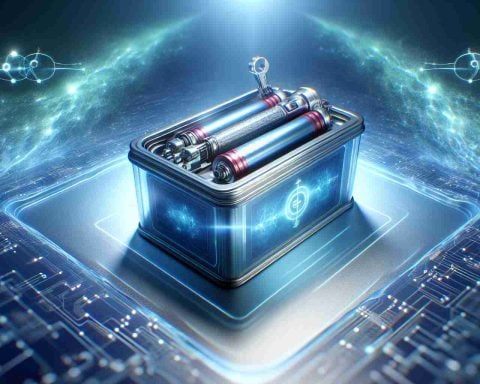- Tower Semiconductor, located in Migdal HaEmek, faces challenges as the semiconductor market evolves.
- The company lost nearly $1 billion in value due to declining demand for analog chips.
- While once essential for vehicles, medical computing, and communications, demand for analog chips has declined as market saturation sets in.
- Competitors like Intel, TSMC, and Samsung have increased production, contributing to the oversupply.
- The rise of AI technology has shifted attention away from Tower’s core sectors.
- Despite not producing AI chips, Tower remains significant in the AI ecosystem by supplying crucial components.
- Revenue forecasts indicate a dip, contrasting with previous growth periods, presenting challenges in a competitive landscape.
- Tower’s future remains uncertain, illustrating the rapid changes within the tech industry.
Nestled in the heart of Migdal HaEmek, Tower Semiconductor finds itself at a crossroads, its fortunes swayed by a tempestuous semiconductor market. Once a pillar of innovation in the analog chip sector, the company now finds nearly $1 billion of its value swept away amidst shifting sands.
Analog chips, the unsung heroes behind the hum of autonomous vehicles, medical computing, and communications, lie at the core of Tower’s offerings. But as car lots filled up and gadget sales stagnated, the demand for these foundational components dwindled. The oversupply is stark—a far cry from the 2021 frenzy when manufacturing lines couldn’t spin fast enough to meet the pandemic-fueled boom.
The stage where this drama unfolds is shared with industry titans like Intel, TSMC, and Samsung, who escalated production rates in response to the prior demand spike. The market’s saturation now whispers through once-busy production floors. Meanwhile, the restless tides of AI innovation—stirred by companies like DeepSeek—draw attention away, casting a shadow over Tower’s traditionally strong sectors.
Despite not crafting AI chips directly, Tower’s role in the AI ecosystem remains vital, providing key components that underpin high-performance systems. Yet, their latest earnings tell a tale of tempered growth, not matching the fervent rise seen in the broader semiconductor world propelled by AI’s potential.
The numbers are revealing: a projected revenue dip outlined in its forecast, juxtaposed against a decade’s crescendo that now simmers to a murmur. Investor calls struck chords of anticipation that weren’t quite met, highlighting the company’s challenges amid an ever-evolving tech landscape.
Amidst this swirling narrative, Tower’s future hangs delicately in the balance, a reminder of how swiftly tides can turn in the relentless march of innovation.
Tower Semiconductor at the Crossroads: Can It Survive the Semiconductor Storm?
Global Impact on Communities and Industries
Tower Semiconductor’s current predicament is emblematic of broader trends in the semiconductor industry. As a provider of analog chips, its products are essential to the success of numerous sectors, including automotive, healthcare, and communications. However, the demand fluctuations and market saturation highlight the vulnerability of markets once considered stable. The downturn in sales might trigger job losses and economic impacts in communities reliant on semiconductor manufacturing.
Analog Chips: The Underappreciated Backbone
Despite the focus on digital advancements, analog chips play a crucial role in interfacing the digital world with real-world signals. They are pivotal in applications ranging from sensor technologies in autonomous vehicles to medical imaging. Their decline can stall innovations in these sectors, potentially causing broader ripple effects in technological advancements.
The AI Wave Overtaking Traditional Sectors
While Tower Semiconductor does not directly manufacture AI chips, its components are crucial for many high-performance systems, including those relying on AI. However, as AI continues to grow, the company’s focus may need to adapt. This shift suggests that companies entrenched in traditional sectors might need to pivot toward AI to remain competitive, pointing to broader industrial changes.
How Are Competitors Adapting?
Large competitors such as Intel, TSMC, and Samsung have adjusted their business models more effectively to brace against market shifts. These adaptations might include strategic investments in AI chip production and diversifying their product lines to shield against single-sector downturns. Tower Semiconductor may need to consider similar strategies or focus on niche markets underserved by these giants.
The Road Ahead for Tower Semiconductor
Projected revenue dips and tempered investor expectations indicate that Tower faces substantial challenges. The company must leverage its expertise in analog technology while exploring opportunities in the expanding AI market. Strategic partnerships, diversifying offerings, and investing in emerging technologies could be ways to pivot from their current trajectory.
Crucial Questions and Outlook
– How can Tower Semiconductor pivot to remain relevant amidst AI advancements? By fostering partnerships with AI-focused companies or investing in R&D to develop AI-compatible chips.
– What structural changes might be necessary to adapt to the changing market? Potential restructuring of business operations, investment in new technologies, or mergers and acquisitions could be on the horizon.
– Could diversification into niche markets offer a path to recovery? By identifying and investing in underserved niches within the analog chip market, Tower might reduce its vulnerability to market saturation.
To stay updated about industry giants shaping the semiconductor landscape, consider following Intel, TSMC, and Samsung. These companies play critical roles in determining market trends and advancing semiconductor technology.
As the semiconductor industry evolves, Tower Semiconductor’s journey underscores the challenges and opportunities inherent in rapidly shifting technological landscapes. The company’s response will be vital for its future and the broader analog chip sector.



















